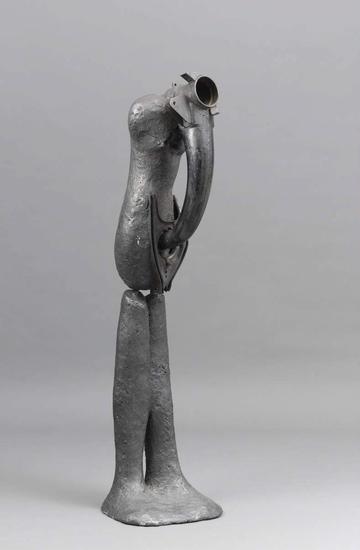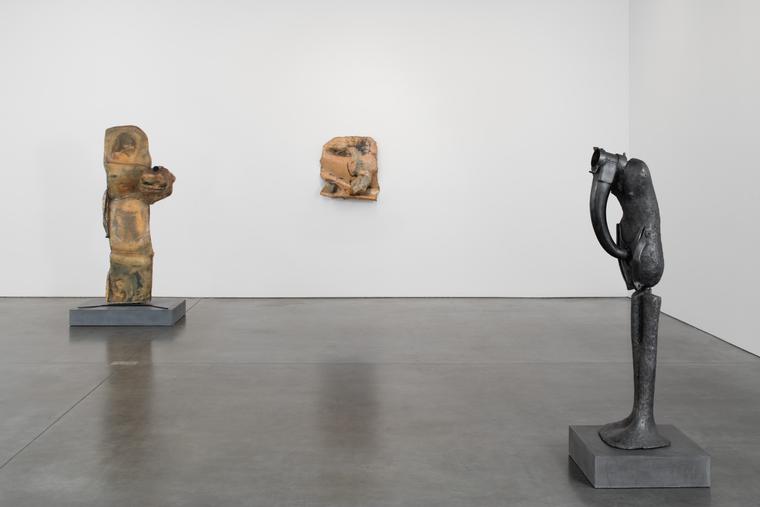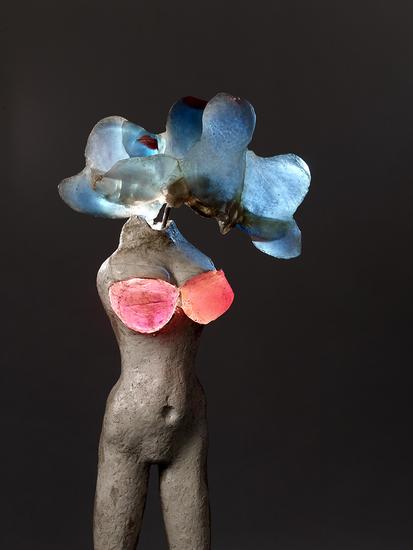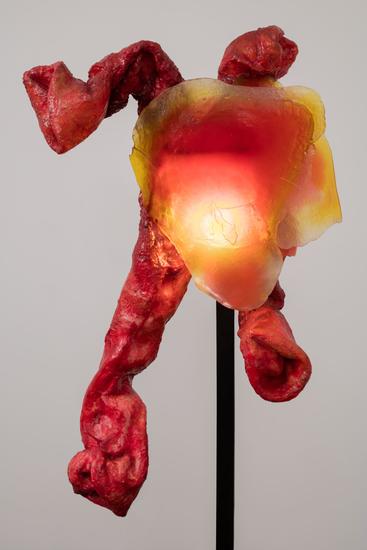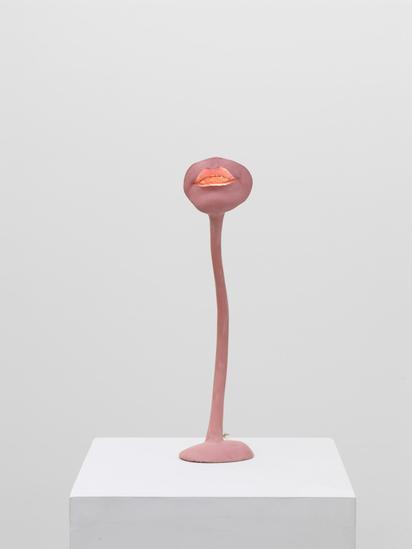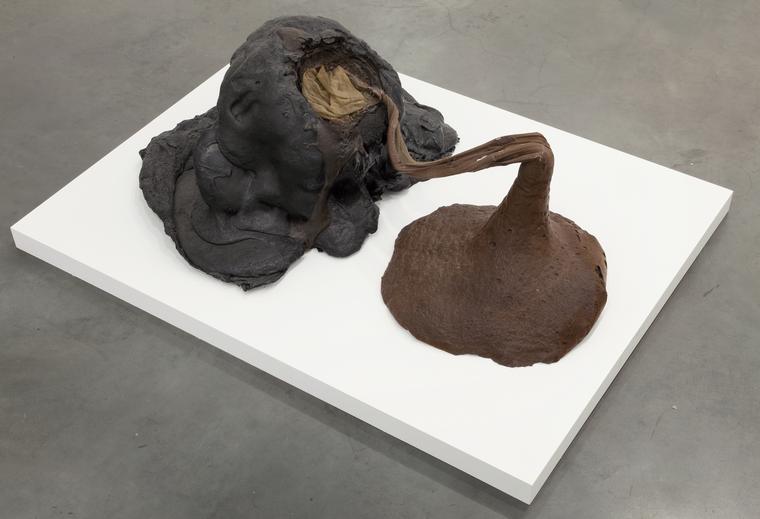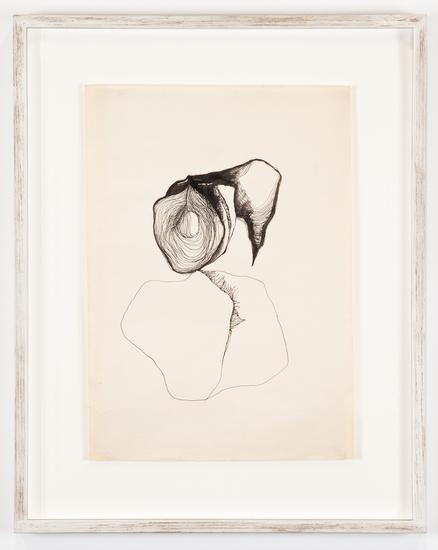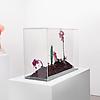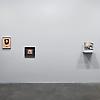Alina Szapocznikow
Installation view:
Alina Szapocznikow: Sculpture Undone
WEILS Contemporary Art Center, Brussels
October 9, 2011 - August 1, 2012

Homme avec instrument [Man with Instrument]
1965
Cement, car part, black patina
58 1/4 x 15 3/4 x 13 13/16 inches
(148 x 40 x 35 cm)
ARG# SZA1965-009
Courtesy The Estate of Alina Szapocznikow / Piotr Stanislawski
© ADAGP, Paris
Installation view:
Alina Szapocznikow
Andrea Rosen Gallery, New York
October 31 - December 5, 2015
Installation view:
Malakoff studio
1965

Femme de ménage (Cleaning Woman)
1965
Plastic cement, auto parts, polyester
Height: 57 inches
(144 cm)
ARG# SZA1965-005
Courtesy The Estate of Alina Szapocznikow / Piotr Stanislawski
© ADAGP, Paris

L'illuminée [Illuminated Woman]
1966-67
Plaster, colored polyester resin, metal and electrical wiring
61 1/16 x 22 7/16 x 15 3/4 inches
(155 x 57 x 40 cm)
ARG# SZA1966-004
Courtesy The Estate of Alina Szapocznikow / Piotr Stanislawski
© ADAGP, Paris
Installation View:
Alina Scapocznikow: Sculpture Undone
Hammer Museum, Los Angeles
February 5 - April 20, 2012
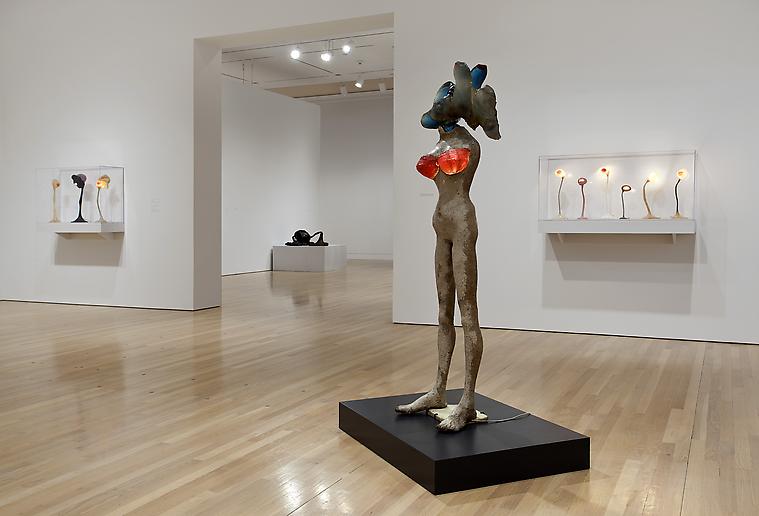
Installation view:
Alina Szapocznikow: Body Traces
Tel Aviv Museum of Art, Tel Aviv, Israel
February 7 - May 31, 2014
Photo by Elad Sarig
Courtesy Tel Aviv Museum of Art
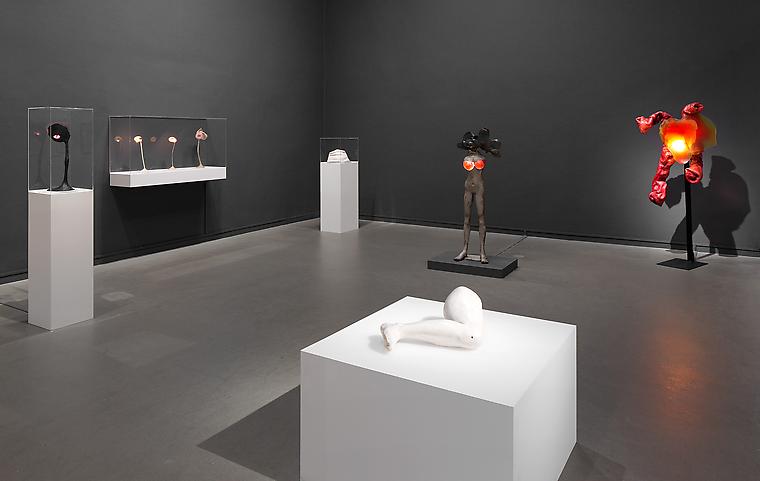
Caprice - Monstre, [Caprice - Monster]
1967
Polyurethane foam, colored polyester resin, metal, electrical wiring, bulb
78 7/8 x 35 7/16 x 17 3/4 inches (200 x 90 x 45 cm)
ARG# SZA1967-015
Courtesy The Estate of Alina Szapocznikow / Piotr Stanislawski
© ADAGP, Paris
Lampe-Bouche
1966
Coloured polyester resin, electrical wiring and metal
14.17 x 4.33 x 3.15 inches
(36 x 11 x 8 cm)
ARG# SZA1966-005
Courtesy The Estate of Alina Szapocznikow / Piotr Stanislawski
© ADAGP, Paris
Installation view:
Alina Szapocznikow: Body Traces
Tel Aviv Museum of Art, Tel Aviv, Israel
February 7 - May 31, 2014
Photo by Elad Sarig
Courtesy Tel Aviv Museum of Art

Pollution II
1968
polyurethane foam, grass, metal
15 3/4 x 18 1/2 x 2 3/4 inches (40 x 47 x 7 cm)
ARG# SZA1968-004
Courtesy The Estate of Alina Szapocznikow / Piotr Stanislawski
© ADAGP, Paris
Sous la Coupole (Under the Cupola)
1970
Polyurethane foam and nylon tights
14.17 x 28.74 x 39.37 inches (36 x 73 x 100 cm)
ARG# SZA1970-004
Courtesy The Estate of Alina Szapocznikow / Piotr Stanislawski
© ADAGP, Paris
Installation view:
Counter Forms
Tetsumi Kudo, Alina Szapocznikow, Paul Thek, Hannah Wilke
Curated by Elena Filipovic
Andrea Rosen Gallery, New York
October 12 – November 16, 2013
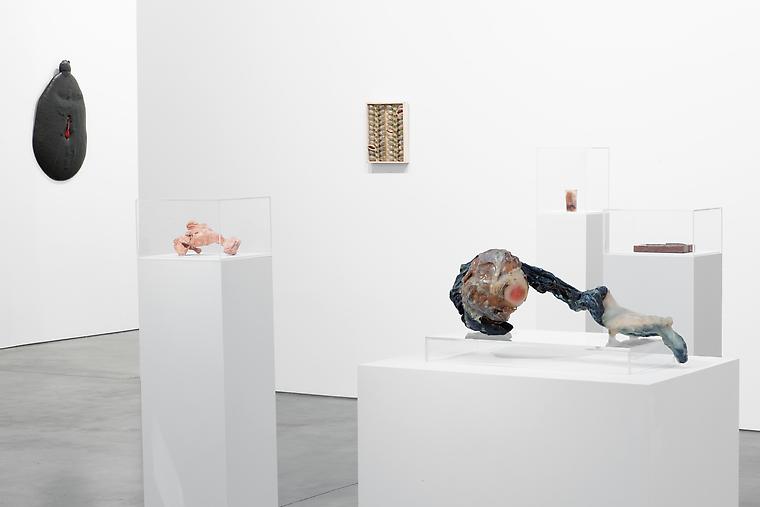
Untitled (derrière rouge)
c. 1970-1971
Colored polyester resin
3.94 x 14.57 x 8.46 inches (10 x 37 x 21.5 cm)
ARG# SZA1971-011
Courtesy The Estate of Alina Szapocznikow / Piotr Stanislawski
© ADAGP, Paris
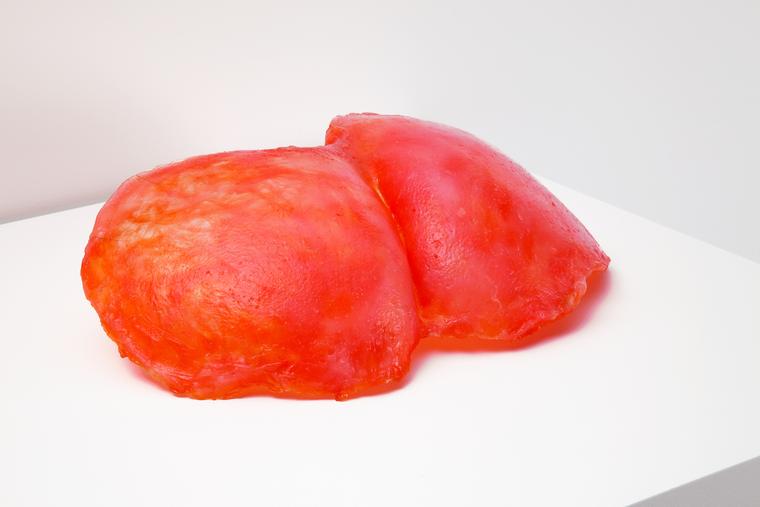
Installation View:
Alina Szapocznikow: Sculpture Undone
Weils, Brussels
October 9, 2011 - August 1, 2012
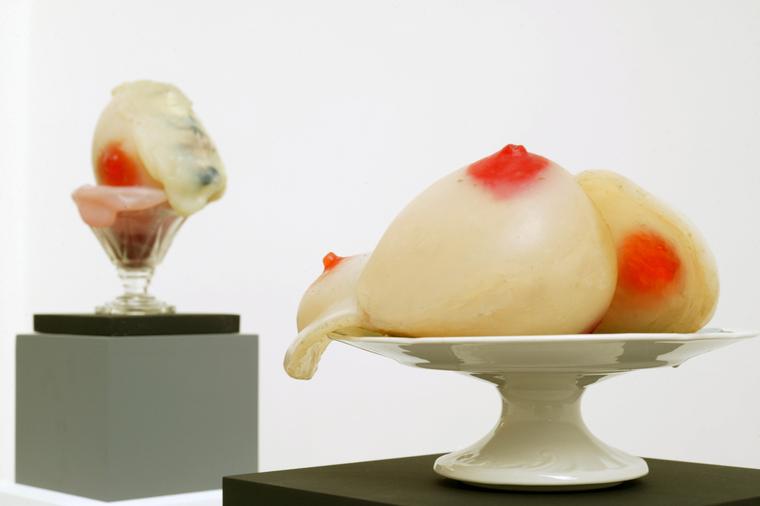
Alina Scapocznikow: Sculpture Undone
Hammer Museum, Los Angeles
February 5 - April 20, 2012
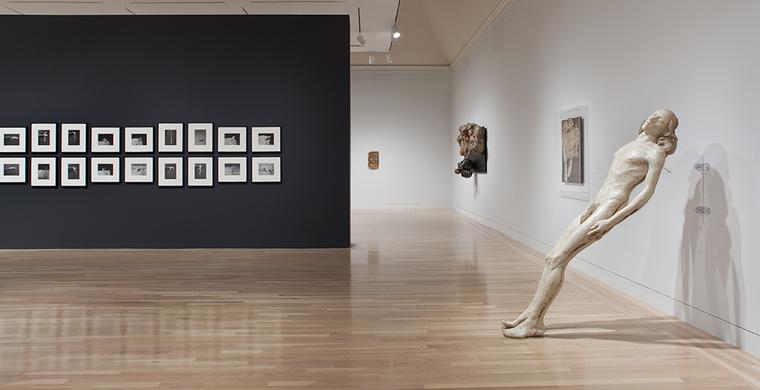
Installation view:
"THEM"
Alina Szapocznikow, Alisa Baremboym, Aleksandra Domanović, Sarah Lucas, Katja Novitskova, Carolee Schneemann and Anicka Yi
June 13 - July 26, 2015
Schinkel Pavillion, Berlin
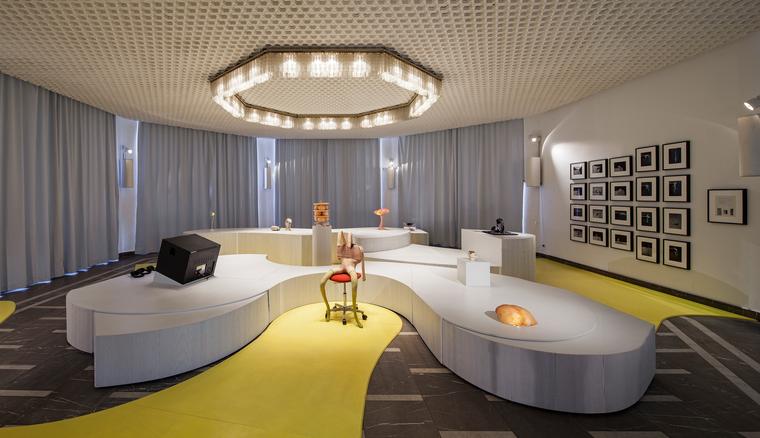
tza (tear)
1971
Cast breast, coated polyester fabric (Polyester resin, gauze)
11.02 x 16.93 x 1.97 inches (28 x 43 x 5 cm)
ARG# SZA1971-002
Courtesy The Estate of Alina Szapocznikow / Piotr Stanislawski
© ADAGP, Paris
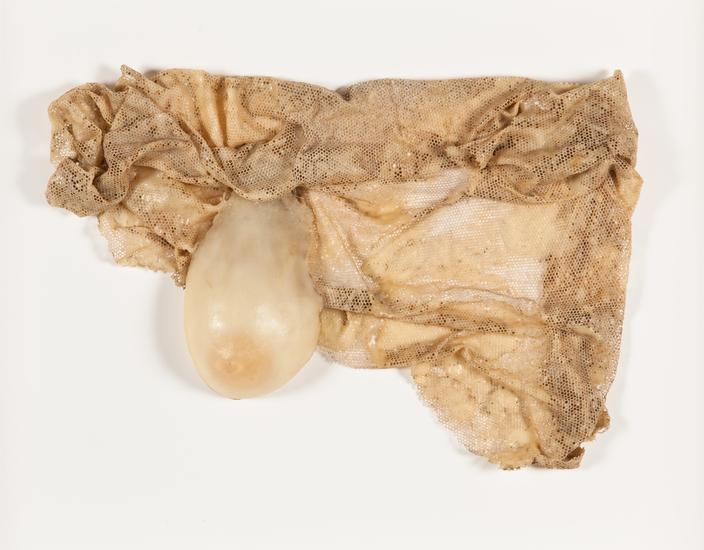
Studium do rzeźby 5 (Study for a sculpture 5)
1963
Ink on paper
Framed: 22.76 x 17.01 x 1.18 inches
(57.8 x 43.2 x 3 cm)
ARG# SZA1963-003
Courtesy The Estate of Alina Szapocznikow / Piotr Stanislawski
© ADAGP, Paris
Bez Tytułu (Sans titre)
1963
Ink on paper
Framed: 20.47 x 16.54 x 1.18 inches
(52 x 42 x 3 cm)
ARG# SZA1963-002
Courtesy The Estate of Alina Szapocznikow / Piotr Stanislawski
© ADAGP, Paris
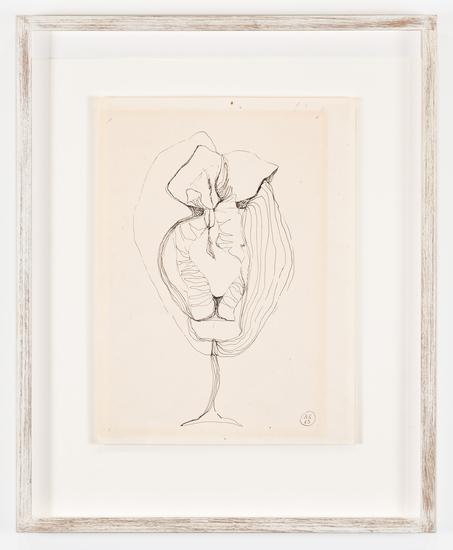
Installation view:
Alina Szapocznikow: Body Traces
Tel Aviv Museum of Art, Tel Aviv, Israel
February 7 - May 31, 2014
Photo by Elad Sarig
Courtesy Tel Aviv Museum of Art

Biography
Widely regarded as one the most influential and significant artists in post-war Poland and Paris, Alina Szapocznikow (1926-1973) has helped to deconstruct and re-imagine traditional sculpture, solidifying her pioneering vision of the human body, and her distinctively radical hybrids of the organic and inorganic. At once seductive and unsettling, Szapocznikow's intimate works take the form of drawings, photographs, and sculptures often made from direct impressions and casts of body parts, each an attempt to fix the traces of the body and record the fleeting moments and absurd paradoxes of life. Incorporating a completely new set of materials––from tinted polyester resin and polyeurethane foam to everyday materials such as pantyhose, newspaper clippings, and grass––her works embrace both material rigor as well as her own deeply personal psychology. As a vessel for memory and formal innovation, Szapocznikow’s work links the intensely personal to our greater humanity.
Alina Szapocznikow was born in 1926 in Kalisz, Poland, and died in 1973 at the age of 47. After surviving the Second World War in concentration camps with her mother, in 1947, she moved to Prague where she studied sculpture in the studio of Otto Wagner, among others, and later studied at the Ecole de Beaux Arts, Paris in 1949. After returning to Poland in 1951, Szapocznikow represented Poland in the 1962 Venice Biennale, thereafter moving back to Paris, fully formed, at a historically vital time, when artists from Marcel Duchamp to Yves Klein were simultaneously developing pivotal territories propelled out of Formalism. Following her death, several exhibitions of her work were held in Warsaw and Paris, however in recent years, Szapocznikow has been recognized by numerous major international exhibitions, including the first comprehensive retrospective that traveled to the Museum of Modern Art, New York; Hammer Museum, Los Angeles; WIELS Contemporary Art Centre, Brussels; and the Wexner Center for the Arts, Columbus (2011-2012); as well as a major survey at the Centre Georges Pompidou, Paris (2012).
For full Artist Bio please download PDF below:
Exhibitions
Past
Counter Forms
Hans Bellmer, John Currin, Marcel Duchamp, Llyn Foulkes, Robert Heinecken, Tetsumi Kudo, Richard Prince, Alina Szapocznikow, Hannah Wilke
Publications
Alina Szapocznikow: Awkward Objects
Drawing on the work of prominent art historians, curators, critics, and collectors, this exhibition catalogue presents the most current research on the work of Alina Szapocznikow.
Born in Kalisz, Poland, in 1926, Szapocznikow studied in Prague and Paris, spent the last decade of her life in France, and created an impressive number of sculptures and drawings that are now defined as post-surrealist and proto-feminist. Recent exhibitions of the artist’s work in Germany and France, along with acquisitions by prominent collections worldwide, have bolstered Szapocznikow’s international reputation and ignited discussion of her significance to twentieth-century art.
ISBN: 9788392404460
Alina Szapocznikow: Body Traces
Jewish sculptor and proto-feminist Alina Szapocznikow (1926, Kalisz– 1973, Paris) was one of Poland’s outstanding post-WWII artists. Within two decades, she exchanged the language of classical sculpture with an idiosyncratic lexicon of new shapes, unusual materials, processes and themes that held a dialogue with the contemporary art scene and her own biography. Szapocznikow expanded the definition of sculpture in a deconstructive process of trial and error, while casting parts of her own body directly: an indexical imprint that testifies to the body’s deterioration.
This catalogue is published on the occassion of the exhibition Alina Szapocznikow: Body Traces at the Tel Aviv Museum of Art, February 7 - May 31, 2014.
Publisher: Tel Aviv Museum of Art, 2014
Paperback, 159 p., 100 ill., 70 colour, Hebrew/English
ISBN: 978-965-539-085
Lovely, Human, True, Heartfelt: The Letters of Alina Szapocznikow and Ryszard Stanislawski, 1948-1971
Alina Szapocznikow: Sculpture Undone, 1955-1972
A sculptor who began working during the postwar period in a classical figurative style, Alina Szapocznikow radically reconceptualized sculpture as an imprint not only of memory but of her own body. Though her career effectively spanned less than two decades (cut short by the artist’s premature death in 1973 at age 47), Szapocznikow left behind a legacy of provocative objects that evoke Surrealism, Nouveau Réalisme and Pop art. Her tinted polyester casts of body parts, often transformed into everyday objects like lamps or ashtrays; her poured polyurethane forms; and her elaborately constructed sculptures, which at times incorporated photographs, clothing or car parts, all remain as wonderfully idiosyncratic and culturally resonant today as when they were first made. Well-known in Poland, where her work has been highly influential since early in her career, Szapocznikow’s compelling oeuvre is ripe for art-historical reexamination. Alina Szapocznikow: Sculpture Undone, 1955–1972 offers a comprehensive overview of this important artist’s work at a moment when international interest is blossoming. Richly illustrated with over 150 color plates, the catalogue features essays that touch on key aspects of her practice and historical reception, as well as an extensive annotated chronology that provides an in-depth exploration of the intersection of her life and art. Working in one of the most rich and complex periods of the twentieth century, Szapocznikow responded to many of the ideological and artistic developments of her time through artwork that is at once fragmented and transformative, sensual and reflective, playfully realized and politically charged.
Alina Szapocznikow was born in Poland in 1926, and gained critical attention there for her early sculpture of the 1950s. She re-settled permanently in France in 1963, where her continued exploration of new materials such as polyester and polyurethane brought her into dialogue with the contemporary art scene of her time. She continued to push the boundaries of sculptural form and subject matter up until her premature death in 1973.
Paperback: 216 pages
Publisher: The Museum of Modern Art, New York; annotated edition edition (January 16, 2012)
ISBN-10: 0870708244
ISBN-13: 978-0870708244
Alina Szapocznikow: From Drawing into Sculpture
One of the first to use materials such as polyurethane foam and polyester resin, Alina Szapocznikow (1926–1973) is a renowned artist in her native country of Poland, and has been the subject of increased interest in the U.S, following her 2012 touring retrospective. Though she is better known for her sculptures, Szapocznikow’s drawings are equally unique and fascinating. Felt-tip, ballpoint, crayons, ink, watercolor and monotype were her materials of choice in the medium. Forty years after her death, they are now being rediscovered by scholars and museums worldwide. The works showcased in this book reveal the depth of Szapocznikow’s fantasy, the originality of her reflections on the body, as well as highlighting her humor, sexuality and exuberance. These drawings reflect the distinctive style of an artist who can be considered an heir to the Surrealists and a precursor to the Pop movement.
Hardcover: 184 pages
Publisher: Editions Dilecta (September 30, 2013)
ISBN-13: 979-1090490291
ASIN: B00AENY5JK
After-affects / After-images: Trauma and Aesthetic Transformation in the Virtual Feminist Museum
Do artists travel away from or towards trauma?
Is trauma encrypted or inscribed in art?
Or can aesthetic practices – after-images – bring about transformation – that does not imply cure or resolution – of the traces – after-affects – of trauma, personal trauma or historical traumas inhabiting the world whose traces artists also process as participants in and sensors for our life-worlds and histories? How does the viewer, coming belatedly or from elsewhere encounter works bearing such traces or seeking forms through which to touch and transform them?
These are some of the questions posed by major feminist art historian and cultural analyst, Griselda Pollock, in her latest installation of the virtual feminist museum. In closely-read case studies, we encounter artworks by Gian Lorenzo Bernini, Ana Mendieta, Louise Bourgeois, Alina Szapocznikow, Anna Maria Maiolino, Vera Frenkel, Sarah Kofman and Chantal Akerman to explore trauma and bereavement, fatal illness, first and second generation Holocaust experience, migration, exile and the encounter with political horror and atrocity. Offering a specifically feminist contribution to trauma studies, and a feminist psychoanalytical contribution to the study of contemporary art, this volume continues the conceptual innovations that have been the hall-mark of Pollock's dedicated exploration of 'feminist interventions in art's histories'.
Griselda Pollock is Professor of Social and Critical Histories of Art and Director of the Centre for Cultural Analysis, Theory and History at the University of Leeds.
Paperback: 384 pages
Publisher: Manchester University Press (October 22, 2013)
ISBN-10: 0719087988
ISBN-13: 978-0719087981
Press
ARTNEWS
REVIEWS ‘WhereThe Earth Spilled Out Infernal Fire’: Alina Szapocznikow at Andrea Rosen
ARTFORUM Critic's Pick
Alina Szapocznikow
FRIEZE Counter Forms Review
Alina Szapocznikow Press Kit
News
Alina Szapocznikow at Kunsthaus Graz
Alina Szapocznikow's work is included in the group exhibition Bittersweet Transformation: Alina Szapocznikow, Katherina Vicourova, and Camille Henroy, curated by Katrin Bucher Trantow, on view from May 26 - August 28, 2016.
Kunsthaus Graz
Lendkai 1
8020 Graz, Austria
Alina Szapocznikow is represented by Andrea Rosen Gallery
Andrea Rosen Gallery announces its representation of the Estate of Alina Szapocznikow.
This Fall, the gallery will present its first solo exhibition of her work, (October 31st – December 5th) with a meticulously chosen group of major figurative sculptures from the 1960s and 1970s, contextualized with drawings and works from the "Souvenir" series.
Alina Szapocznikow, Alisa Baremboym, Aleksandra Domanović, Sarah Lucas, Katja Novitskova, Carolee Schneemann and Anicka Yi
THEM
Schinkel Pavillion, Berlin
June 13 - July 26, 2015
Alina Szapocznikow at the Tel Aviv Museum of Art
Tel Aviv, Israel
